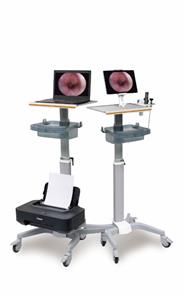Effects of laparoscopy and open surgery on stress response and surgical outcomes in patients with colorectal cancer
The colorectal cancer patients who met the requirements of hospitalization in our department in recent years were selected as the observation objects, and the laparoscopic surgery group (observation group) and the laparotomy group (control group) were selected respectively, and the following related indicators were compared and analyzed: operation time, intraoperative bleeding volume, postoperative exhaust time, postoperative hospital stay; leukocyte count, C-reactive protein, interleukin-6, procalcitonin; sphincter preservation rate; length of surgically resected specimen, number of lymph nodes dissected, distance to distal resection margin; postoperative bleeding , incision infection, pulmonary infection, anastomotic leakage or anastomotic stenosis; local recurrence, incision implantation, distant metastasis, postoperative intestinal obstruction, postoperative 5-year survival rate. Results The operation time of the observation group was significantly higher than that of the control group, and the difference was statistically significant (p<0.05). The difference was statistically significant (p<0.05). There was no significant difference in preoperative white blood cell count, C-reactive protein, interleukin-6 and procalcitonin levels between the two groups (P>0.05). The level of white blood cell count in each group was significantly higher than that before operation on the first day after operation, and the difference was statistically significant (p<0.05). The white blood cell count level on the third postoperative day was significantly lower than that on the first postoperative day. The difference was statistically significant (p<0.05), but there was no significant difference compared with preoperative (P>0.05). The levels of C-reactive protein, interleukin-6 and procalcitonin on the 3rd day after operation were significantly lower than those on the 1st day after operation, and the difference was statistically significant (p<0.05), but it was significantly higher than that before operation, and the difference was statistically significant (P<0.05). On the 1st and 3rd day after operation, the levels of white blood cell count, C-reactive protein, interleukin-6 and procalcitonin in the observation group were significantly lower than those in the control group, and the differences were statistically significant (p< 0.05). There was no statistical difference in the total sphincter preservation rate between the two groups (p>0.05), but in the group with a distance from the lower edge of the tumor (5-7) cm from the anus, the anus preservation rate in the observation group was significantly higher than that in the control group, with a statistically significant difference (p<0.05). ). There was no statistical difference between the two groups in the length of surgically resected specimens, the number of lymph nodes dissected, and the distance of the distal resection margin (p>0.05). The total incidence of recent complications in the observation group was 18.3%, and the total incidence in the control group was 30.0%, and the difference was not statistically significant (p>0.05). The incidence rate in the group was 20.0%, and the difference was statistically significant (p<0.05). There was no statistical difference in the comparison of local recurrence, incision implantation and distant metastasis between the two groups (p>0.05); but in the comparison of postoperative intestinal obstruction, the incidence of postoperative intestinal obstruction in the observation group was significantly lower than that in the control group, and the difference was Statistically significant (p<0.05). The 5-year survival rate of the two groups was higher than 50%, and there was no significant difference in the survival rate at the same time period (p>0.05). Conclusions Laparoscopic surgery can achieve the same radical effect as open surgery, and there is no significant difference in the number of lymph nodes dissected and the distance of the distal resection margin. However, laparoscopic surgery can reduce the amount of intraoperative blood loss, and the postoperative recovery is faster, especially the anus preservation rate within the range of 5-7cm from the lower edge of the tumor to the anus has been greatly improved, and the incidence of postoperative complications can be reduced. It is safe and reliable, and it is worthy of further study in clinical practice.




